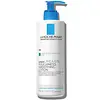What's inside
What's inside
 Key Ingredients
Key Ingredients

 Benefits
Benefits

 Concerns
Concerns

 Ingredients Side-by-side
Ingredients Side-by-side

Butyl Methoxydibenzoylmethane 3%
UV AbsorberHomosalate 12%
Skin ConditioningEthylhexyl Salicylate 5%
UV AbsorberOctocrylene 1.7%
UV AbsorberBenzophenone-3 3%
UV AbsorberWater
Skin ConditioningC12-15 Alkyl Benzoate
AntimicrobialDimethicone
EmollientGlycine Soja Seed Extract
Skin ConditioningCetearyl Alcohol
EmollientDiethylhexyl 2,6-Naphthalate
EmollientEthylene/Acrylic Acid Copolymer
Emulsion StabilisingGlycerin
HumectantPanthenol
Skin ConditioningPhenyl Trimethicone
Skin ConditioningSilica
AbrasiveAluminum Starch Octenylsuccinate
AbsorbentArachidyl Alcohol
EmollientCetearyl Glucoside
EmulsifyingMethylparaben
PreservativeSteareth-2
EmulsifyingPolyacrylate-13
Behenyl Alcohol
EmollientTitanium Dioxide
Cosmetic ColorantSteareth-21
CleansingMica
Cosmetic ColorantPolymethyl Methacrylate
Disodium EDTA
Polyisobutene
Arachidyl Glucoside
EmulsifyingPentaerythrityl Tetra-Di-T-Butyl Hydroxyhydrocinnamate
AntioxidantBoron Nitride
AbsorbentPolysorbate 20
EmulsifyingPropylparaben
PreservativeEthylparaben
PreservativeBenzalkonium Chloride
AntimicrobialPhenoxyethanol
PreservativeParfum
MaskingButyl Methoxydibenzoylmethane 3%, Homosalate 12%, Ethylhexyl Salicylate 5%, Octocrylene 1.7%, Benzophenone-3 3%, Water, C12-15 Alkyl Benzoate, Dimethicone, Glycine Soja Seed Extract, Cetearyl Alcohol, Diethylhexyl 2,6-Naphthalate, Ethylene/Acrylic Acid Copolymer, Glycerin, Panthenol, Phenyl Trimethicone, Silica, Aluminum Starch Octenylsuccinate, Arachidyl Alcohol, Cetearyl Glucoside, Methylparaben, Steareth-2, Polyacrylate-13, Behenyl Alcohol, Titanium Dioxide, Steareth-21, Mica, Polymethyl Methacrylate, Disodium EDTA, Polyisobutene, Arachidyl Glucoside, Pentaerythrityl Tetra-Di-T-Butyl Hydroxyhydrocinnamate, Boron Nitride, Polysorbate 20, Propylparaben, Ethylparaben, Benzalkonium Chloride, Phenoxyethanol, Parfum
Water
Skin ConditioningUrea
BufferingGlycerin
HumectantButyrospermum Parkii Butter
Skin ConditioningBrassica Campestris Seed Oil
Skin ConditioningDicaprylyl Carbonate
EmollientIsopropyl Palmitate
EmollientPentylene Glycol
Skin ConditioningGlycine
BufferingCetearyl Alcohol
EmollientSilica
AbrasiveStearic Acid
CleansingAllantoin
Skin ConditioningSorbitan Oleate
EmulsifyingSorbitan Tristearate
EmulsifyingGlyceryl Stearate
EmollientPEG-100 Stearate
PEG-20 Methyl Glucose Sesquistearate
EmulsifyingIsohexadecane
EmollientSodium Hydroxide
BufferingSodium Lactate
BufferingMyristic Acid
CleansingPalmitic Acid
EmollientMannose
HumectantHydroxyacetophenone
AntioxidantHydroxyethylpiperazine Ethane Sulfonic Acid
BufferingCaprylyl Glycol
EmollientCitric Acid
BufferingTrisodium Ethylenediamine Disuccinate
Xanthan Gum
EmulsifyingPolysorbate 80
EmulsifyingAcrylamide/Sodium Acryloyldimethyltaurate Copolymer
Emulsion StabilisingAcrylates/C10-30 Alkyl Acrylate Crosspolymer
Emulsion StabilisingTocopherol
AntioxidantPentaerythrityl Tetra-Di-T-Butyl Hydroxyhydrocinnamate
AntioxidantChlorhexidine Digluconate
AntimicrobialWater, Urea, Glycerin, Butyrospermum Parkii Butter, Brassica Campestris Seed Oil, Dicaprylyl Carbonate, Isopropyl Palmitate, Pentylene Glycol, Glycine, Cetearyl Alcohol, Silica, Stearic Acid, Allantoin, Sorbitan Oleate, Sorbitan Tristearate, Glyceryl Stearate, PEG-100 Stearate, PEG-20 Methyl Glucose Sesquistearate, Isohexadecane, Sodium Hydroxide, Sodium Lactate, Myristic Acid, Palmitic Acid, Mannose, Hydroxyacetophenone, Hydroxyethylpiperazine Ethane Sulfonic Acid, Caprylyl Glycol, Citric Acid, Trisodium Ethylenediamine Disuccinate, Xanthan Gum, Polysorbate 80, Acrylamide/Sodium Acryloyldimethyltaurate Copolymer, Acrylates/C10-30 Alkyl Acrylate Crosspolymer, Tocopherol, Pentaerythrityl Tetra-Di-T-Butyl Hydroxyhydrocinnamate, Chlorhexidine Digluconate
Ingredients Explained
These ingredients are found in both products.
Ingredients higher up in an ingredient list are typically present in a larger amount.
Cetearyl alcohol is a mixture of two fatty alcohols: cetyl alcohol and stearyl alcohol. It is mainly used as an emulsifier. Emulsifiers help prevent the separation of oils and products. Due to its composition, it can also be used to thicken a product or help create foam.
Cetearyl alcohol is an emollient. Emollients help soothe and hydrate the skin by trapping moisture.
Studies show Cetearyl alcohol is non-toxic and non-irritating. The FDA allows products labeled "alcohol-free" to have fatty alcohols.
This ingredient is usually derived from plant oils such as palm, vegetable, or coconut oils. There is debate on whether this ingredient will cause acne.
Due to the fatty acid base, this ingredient may not be Malassezia folliculitis safe.
Learn more about Cetearyl AlcoholGlycerin is already naturally found in your skin. It helps moisturize and protect your skin.
A study from 2016 found glycerin to be more effective as a humectant than AHAs and hyaluronic acid.
As a humectant, it helps the skin stay hydrated by pulling moisture to your skin. The low molecular weight of glycerin allows it to pull moisture into the deeper layers of your skin.
Hydrated skin improves your skin barrier; Your skin barrier helps protect against irritants and bacteria.
Glycerin has also been found to have antimicrobial and antiviral properties. Due to these properties, glycerin is often used in wound and burn treatments.
In cosmetics, glycerin is usually derived from plants such as soybean or palm. However, it can also be sourced from animals, such as tallow or animal fat.
This ingredient is organic, colorless, odorless, and non-toxic.
Glycerin is the name for this ingredient in American English. British English uses Glycerol/Glycerine.
Learn more about GlycerinPentaerythrityl Tetra-Di-T-Butyl Hydroxyhydrocinnamate (long name, huh?) is a synthetic antioxidant.
It is used to help stabilize other antioxidants or prevent the color from changing in a product.
As an antioxidant, it helps fight free-radical molecules. Free-radical molecules are capable of damaging our cells and other genetic material. Thus, antioxidants may reduce the signs of aging.
This ingredient is oil-soluble.
Learn more about Pentaerythrityl Tetra-Di-T-Butyl HydroxyhydrocinnamateSilica, also known as silicon dioxide, is a naturally occurring mineral. It is used as a fine, spherical, and porous powder in cosmetics.
Though it has exfoliant properties, the function of silica varies depending on the product.
The unique structure of silica enhances the spreadability and adds smoothness, making it a great texture enhancer.
It is also used as an active carrier, emulsifier, and mattifier due to its ability to absorb excess oil.
In some products, tiny microneedles called spicules are made from silica or hydrolyzed sponge. When you rub them in, they lightly polish away dead skin layers and enhance the penetration of active ingredients.
Learn more about SilicaWater. It's the most common cosmetic ingredient of all. You'll usually see it at the top of ingredient lists, meaning that it makes up the largest part of the product.
So why is it so popular? Water most often acts as a solvent - this means that it helps dissolve other ingredients into the formulation.
You'll also recognize water as that liquid we all need to stay alive. If you see this, drink a glass of water. Stay hydrated!
Learn more about Water